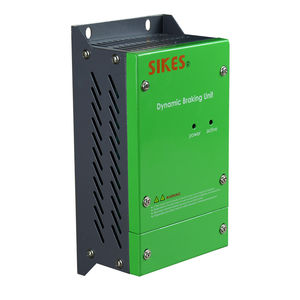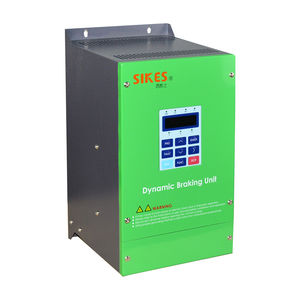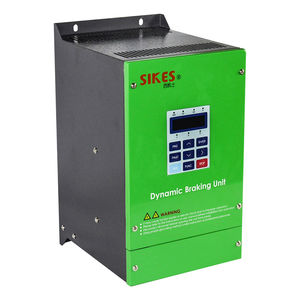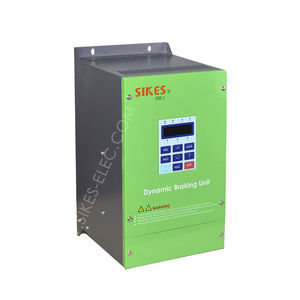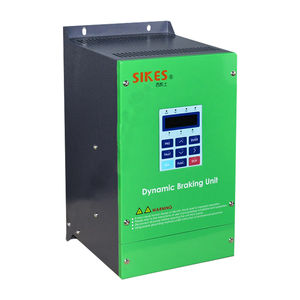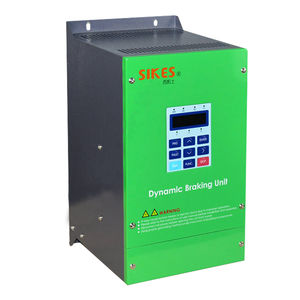
- Products
- Braking chopper
- Shenzhen Sikes Electric Co., Ltd.
- Company
- Products
- Catalogs
- News & Trends
- Exhibitions
Braking unit GN-6 series



Add to favorites
Compare this product
Description
The GN-6 series braking resistor units are often used with AC VFD’s to produce a braking torque in the motor during overhauling conditions. The dynamic braking resistor is connected across the DC bus and will see voltages as high as 1200 volts.They can divert the regenerative energy which is produced in the process of braking of the motor, into a braking resistor, converting that energy into heat.
Key Features:
1. Long term high stability and wide compatibility for heavy duty
2. simple connecting using a plug and can be installed in parallel.
3. conformity with CE FCC
4. no configuration or commisioning required
5. discharge resistor on board.
6. easy operation with a keyboard
7. high DC bus voltage availability
Characteristics:
1.Rated power: 85KW-450KW, based on 25℃ free air rating
2.Maximum braking current: 400A
3.Minimum resistance value: 2.8Ω( to R05 on request)
4.IP protection: IP00,IP20, IP23 or as required
5.Chopper voltage: DC1150V±5v( with a keyboard)
6. System voltage grade: 660V,or 1200V
7.Terminal type: M10
8. ED(The efficiency of duty): 20%-80%,
9.Temperature Coefficients: 50,100 and 400ppm/℃ or as required
10.Operating Temperature:-55℃ to +65℃
11.Insulation Resistance: >1000MΩ (500V 25℃ 75% relative humidity)
12.Dielectric strength: >3.0KV 50Hz 1min(25℃ 75% relative humidity)
Application:
1.simulation load testing,like generator,engineer,motor,etc
2.automation control , braking circuits of medium-voltage and high-wattage inverter’s
3.crane&elevator systems, various steel mill applications and transit applications.
Catalogs
No catalogs are available for this product.
See all of Shenzhen Sikes Electric Co., Ltd.‘s catalogsOther Shenzhen Sikes Electric Co., Ltd. products
Dynamic Braking Unit
*Prices are pre-tax. They exclude delivery charges and customs duties and do not include additional charges for installation or activation options. Prices are indicative only and may vary by country, with changes to the cost of raw materials and exchange rates.



